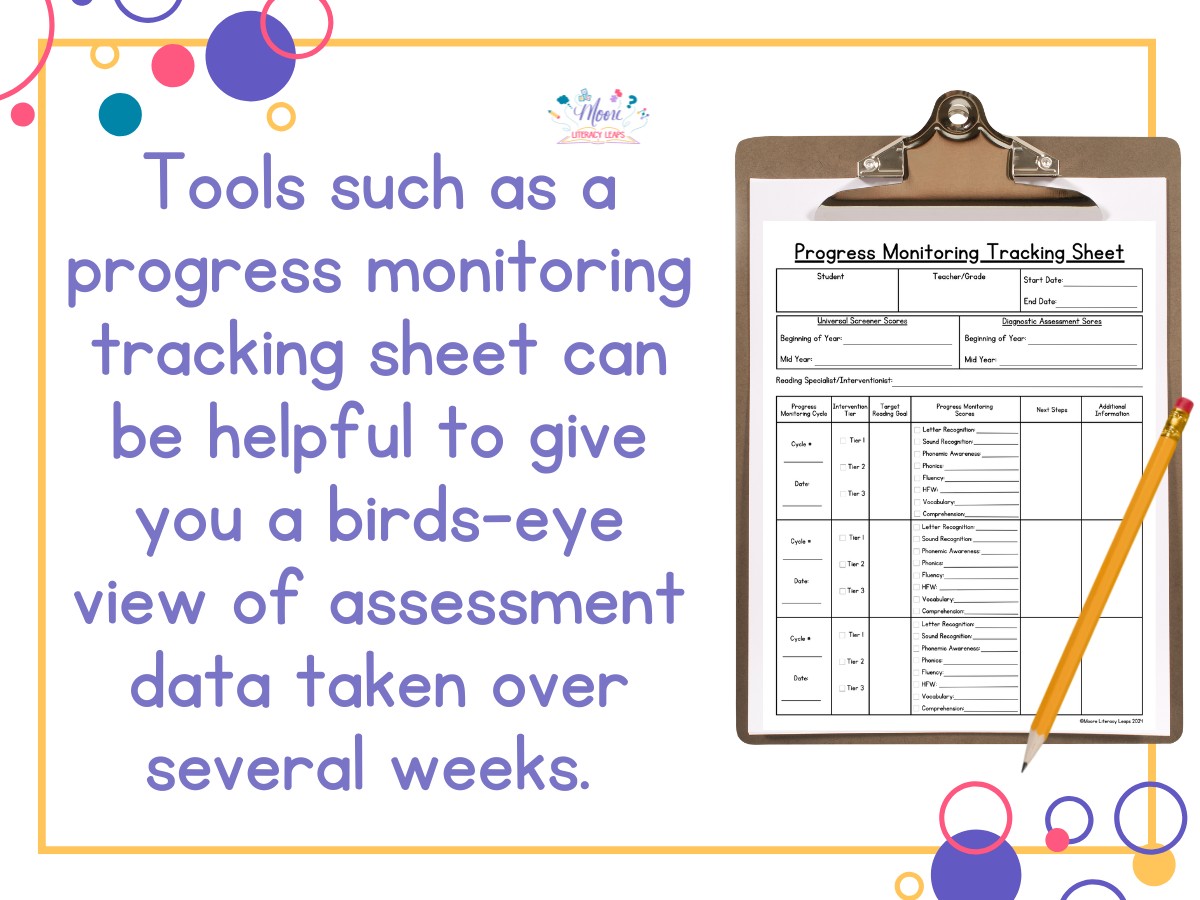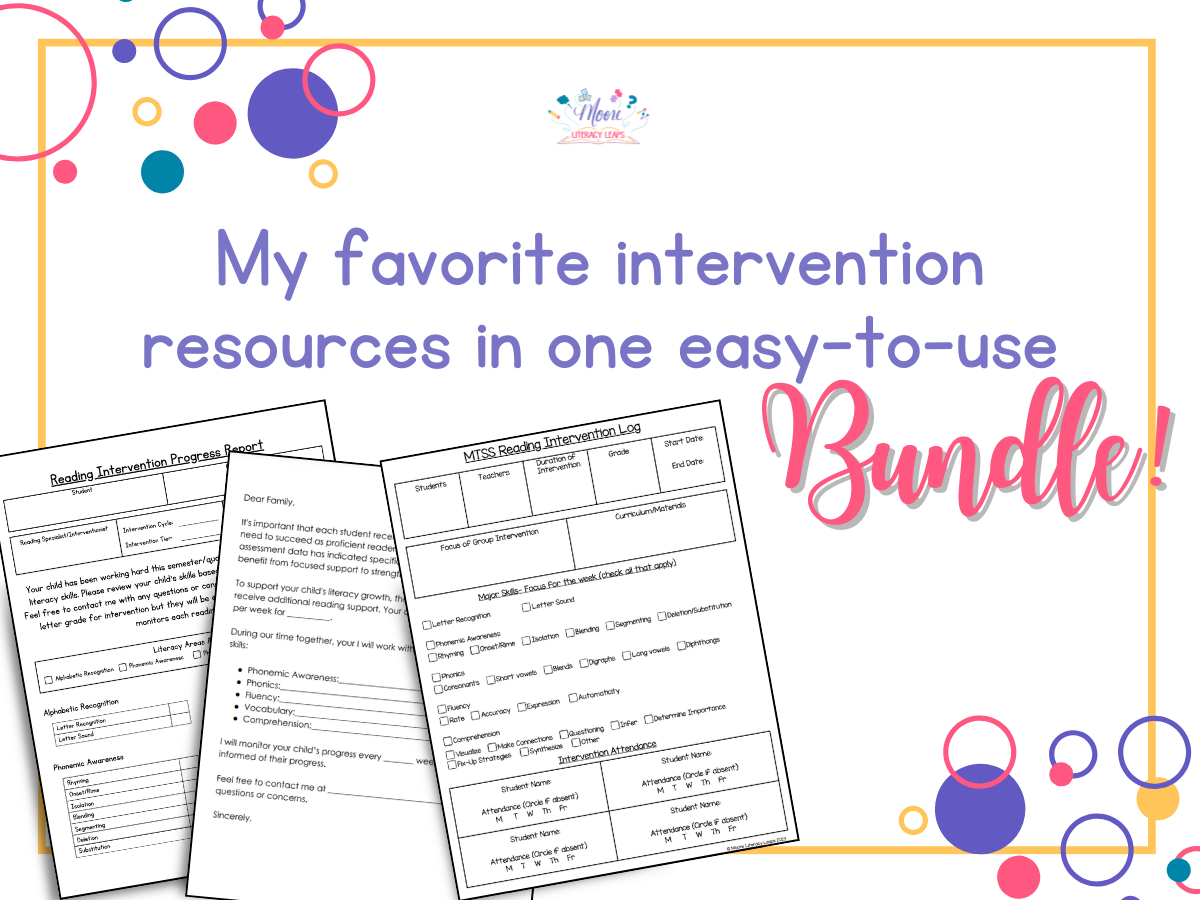3 Reasons Using Progress Monitoring Data Improves Reading Intervention Decisions
Progress monitoring is the backbone of successful reading interventions.
Okay, that might be a little over the top…
But routinely progress monitoring students is important when it comes to delivering successful reading interventions.
Progress monitoring is a practice where teachers give brief assessments regularly (weekly or biweekly) and the progress monitoring data is used to assess students’ academic performance to ensure that students are making progress toward their learning goals.
And it’s so important when we consider that we are talking about our struggling students where time is already against them.
However, many teachers skip this critical step because of time or other factors, and in doing so are skipping a critical step in the intervention process.
The Importance of Using Progress Monitoring Data to Guide Instruction
Time is already working against students receiving reading intervention support.
Maybe that’s a little too “doomsday-ish” but there is some truth to that.
Without targeted support, the gap between proficient and struggling readers can continue to grow as content gets more involved and rigor is increased. Which is why it’s important to maximize the 30 minutes of reading intervention that a student receives.
And you do that by tracking data!
I get it…
Tracking and analyzing numbers can feel tedious…
Not to mention how difficult it can be to make or find the time to administer assessments.
But without using progress monitoring data, it’s difficult to objectively see student progress and to objectively and efficiently pinpoint strategies that are or are not working to close the gap for the student.
How Progress Monitoring Data Supports Reading Interventions
Too often, progress monitoring becomes a “check-list” task.
You know, something that you do because you have to but never really go back and look at it…
And I get it - analyzing numbers and looking at data isn’t everyone’s idea of a good time, but that data collected can improve your decision-making power for students receiving a reading intervention to ensure they reach their academic goals!
Here are some ways that using progress monitoring data can support your reading interventions.
Progress Monitoring Can Supercharge Your Planning Process
As I mentioned earlier, time is not on our side when working with struggling readers. Which is why it's important to make sure that we are maximizing our time with strong, targeted interventions.
And how do you make sure interventions are strong and targeted?
Progress monitoring data.
Routinely progress monitoring students provides educators a lens to objectively view student progress that teachers can use to, in real-time, adjust instructional strategies based on student performance.
Tools such as a progress monitoring tracking sheet can be helpful to give you a birds-eye view of assessment data taken over several weeks.
Real-Time Feedback on Student Growth
Relying solely on benchmark assessments instead of using weekly (or biweekly) progress monitoring data for feedback on student progress has its limitations.
The infrequency of when those assessments are given will not give you the “in-the-moment” data that you need to make strong and effective instructional decisions for students receiving reading intervention support.
With 8 and sometimes 12 weeks between assessments, it's difficult to gauge student growth and pivot to address areas of concern promptly.
Provides Comprehensive Data Points
Numbers can be deceiving.
Without enough data points, it can be difficult to make accurate interpretations about student progress. This is why having multiple data points is important instead of relying on a single assessment or benchmark.
When students are progress monitored routinely, the range of data points offers a more holistic view of the student’s progress and will also highlight areas of strength and areas in need of additional intervention.
Having multiple data points from progress monitoring ensures that assumptions are not being made about a student’s progress and that support is targeted toward the student’s specific needs.
Set Up Systems and Routines to Use Progress Monitoring Data in Your Classroom
We can all agree that progress monitoring students and analyzing that data is important…
But finding the time to set up systems and routines to streamline the process can be challenging because not only is it finding the time to give the assessments, but it’s also making the time to analyze the data and organize it in such a way that makes it easy to review in the future, not to mention finding effective assessments to even give students in the first place.
That’s where I can help!
I put all of my favorite reading intervention tools into one easy-to-use bundle that includes not only documents to help track and monitor progress monitoring data, but this bundle also includes some of my favorite assessments that can be used for progress monitoring and other resources to streamline and simplify your reading interventions.
And the best part - not only are there print-and-go resources, there are also editable templates that you can customize!
Looking for More Reading Intervention Tips?
Looking for more reading intervention tips and strategies? Make sure you go and follow me on Instagram!



